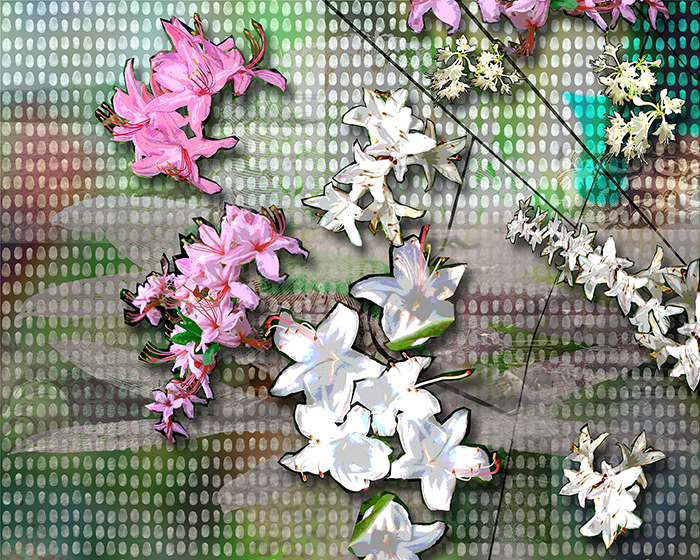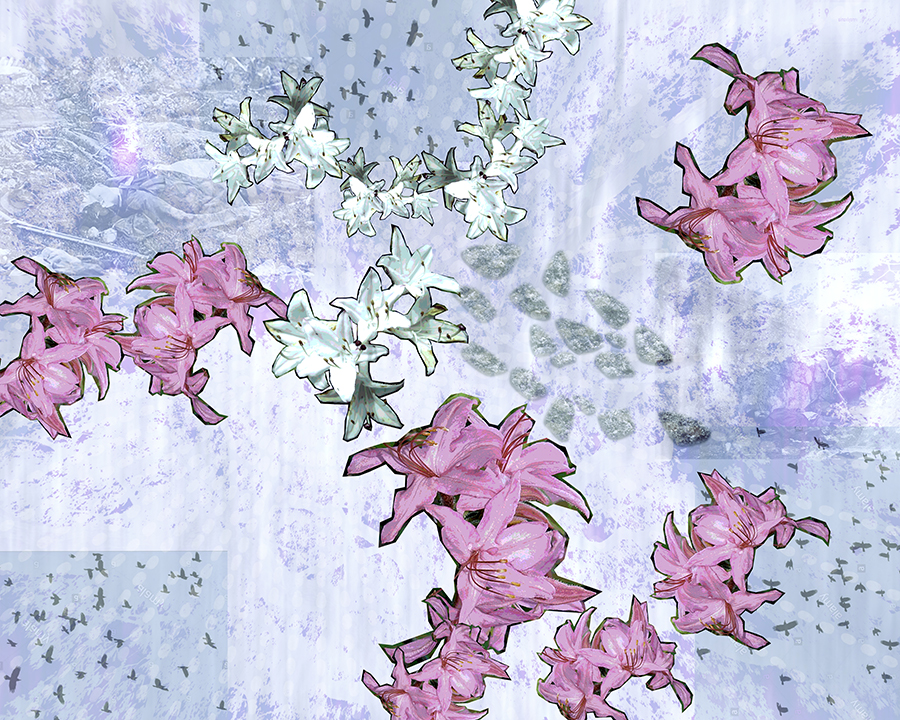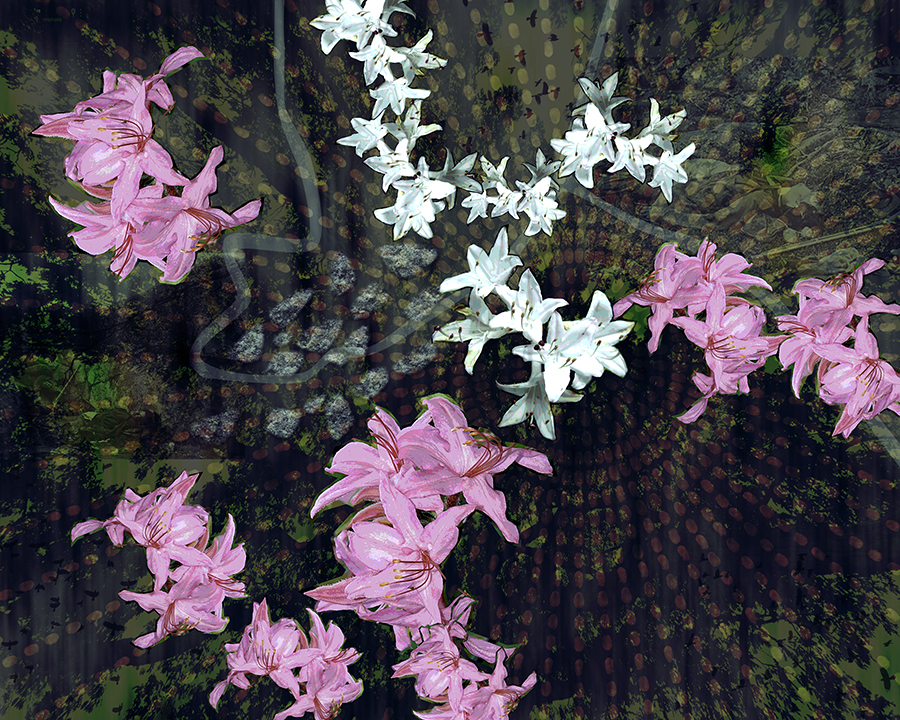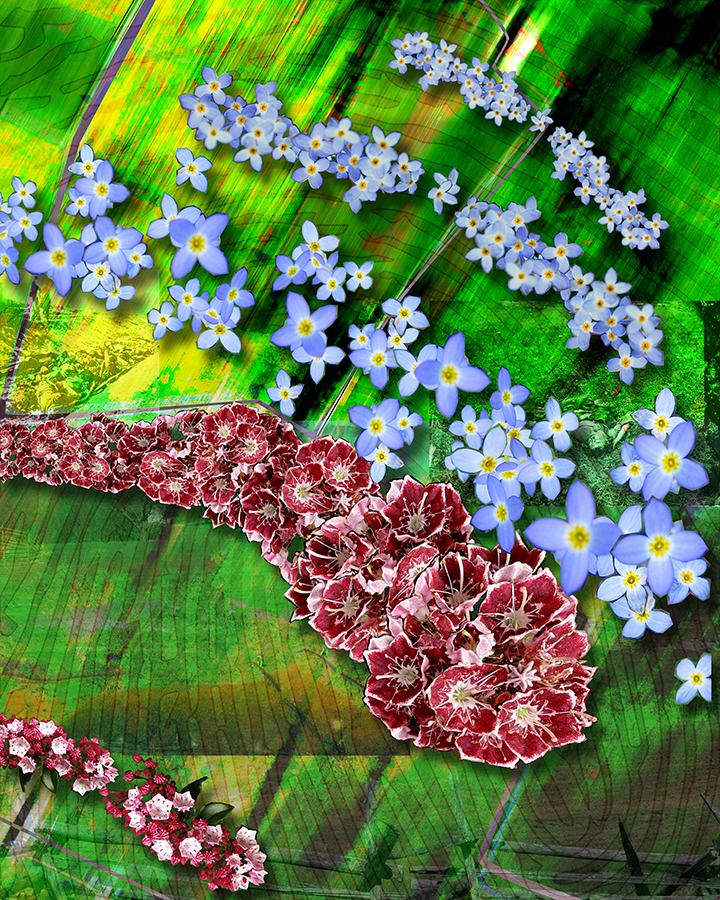
Gettysburg I - Herbst's Woods, Rhododendron prinophyllum (Roseshell azalea), Rhododendron viscosum (Swamp Azalea), 2021, archival inkjet and acrylic on Belgian linen, 40" x 60"


Gettysburg II - Devil's Den (Alpha), Rhododendron prinophyllum (Roseshell azalea), Rhododendron viscosum (Swamp Azalea) 2021, archival inkjet and acrylic on Belgian linen, 40" x 60"


Gettysburg III - Devil's Den (Omega), Rhododendron prinophyllum (Roseshell azalea), Rhododendron viscosum (Swamp Azalea) 2021, archival inkjet and acrylic on Belgian linen, 40" x 60"


Antietam - Bloody Lane, Kalmia latifolia, (Mountain Laurel), Houstonia caerulea (Quaker Lady), 2021, archival inkjet and acrylic on Belgian linen, 40" x 60"

A first impression of many of the world's former battlefields is often that of a serene, bucolic vista, a scene so beautiful that the blood spilled there is hard to imagine. The battlefields of the American Civil War had seen bloodshed over centuries. For example, at Gettysburg, the 18th-century slaughter of Shawnee Indians by the neighboring Iroquois nation was preceded by Shawnee depredations upon early English settlers.
"Bloody Ground" explores the intersection of place, history and beauty, and questions what we have lost or gained through our need to perpetually soak our planet in blood. Each image in this series depicts a battle site, both literally and abstractly, and is composed of many layers that introduce a plethora of data: satellite, geophysical, cartographic, symbolic and allegorical. The wildflowers depicted are native to each site, and notably thrive in iron-rich soil. The flower arrangements are composed according to documented troop formations along the battle lines: red or pink for Rebel troops, and blue or white for Union troops. Map elements (such as roads, paths, waterways and foliage) appear as abstract motifs, yet are cartographically accurate; they serve as cues that what seems to be a non-representational image specifically represents an actual location where humans fought and died. Fed by the iron in spilled blood, the wildflowers float above a textured background comprised of imagery of carnage suffered at that site.
The works in this project are intended as windows through layers of space and time, into our shared history and our hearts.

|